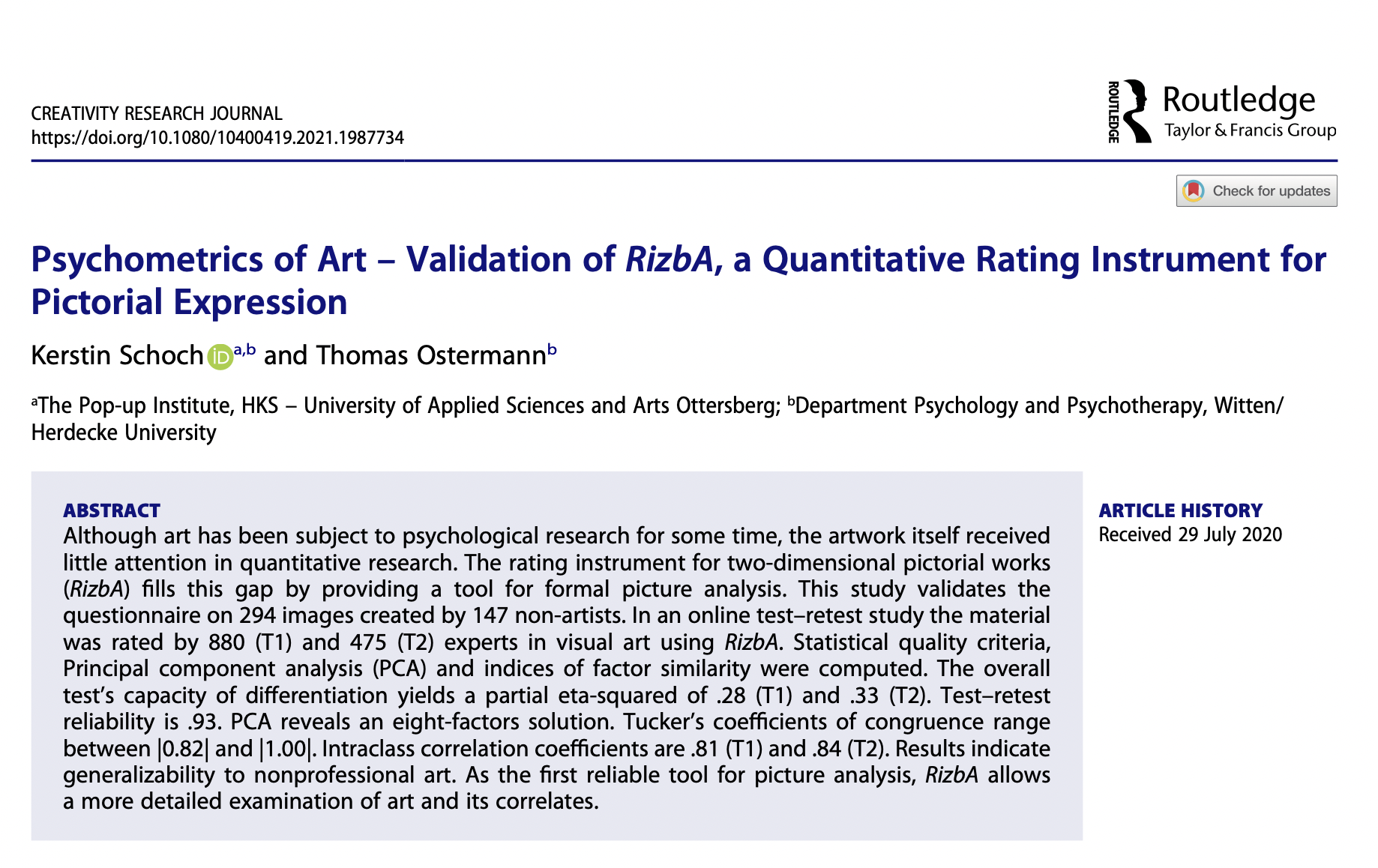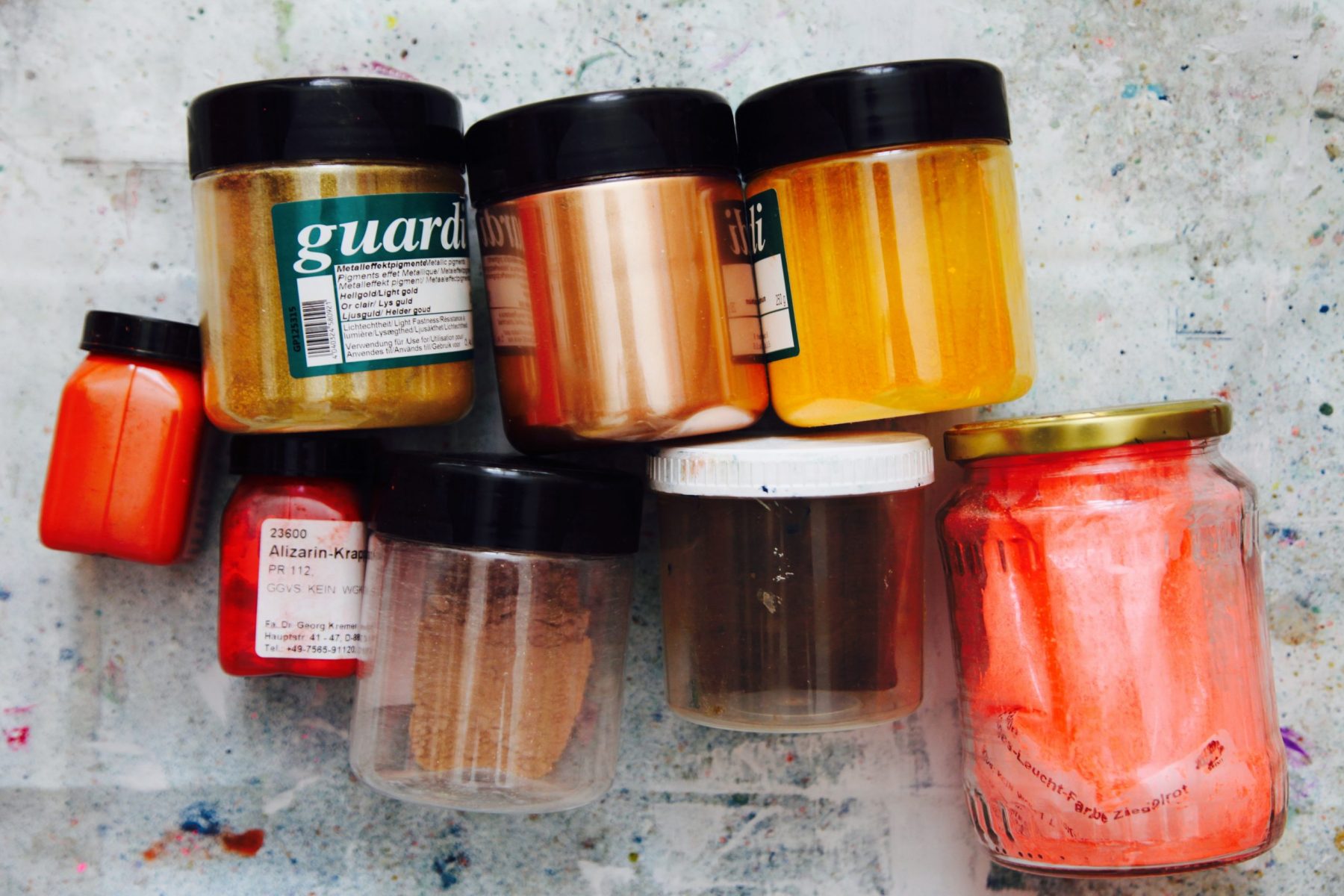All good things are worth waiting for and getting published. My study conducted in 2017 has now been published in the Creativity Research Journal after a few rounds of peer review. The study validated the Rating instrument for two-dimensional pictorial works (RizbA) on 880 drawings, paintings, and collages created by non-artists and non-professional artists. Spoiler: It works.

abstract
Although art has been subject to psychological research for some time, the artwork itself received little attention in quantitative research. The rating instrument for two-dimensional pictorial works (RizbA) fills this gap by providing a tool for formal picture analysis. This study validates the questionnaire on 294 images created by 147 non-artists. In an online test–retest study the material was rated by 880 (T1) and 475 (T2) experts in visual art using RizbA. Statistical quality criteria, Principal component analysis (PCA) and indices of factor similarity were computed. The overall test’s capacity of differentiation yields a partial eta-squared of .28 (T1) and .33 (T2). Test–retest reliability is .93. PCA reveals an eight-factors solution. Tucker’s coefficients of congruence range between |0.82| and |1.00|. Intraclass correlation coefficients are .81 (T1) and .84 (T2). Results indicate generalizability to nonprofessional art. As the first reliable tool for picture analysis, RizbA allows a more detailed examination of art and its correlates.
open access
Once again, I was faced with the dilemma of Open Access or impact factor, as there are hardly any journals in my field that fulfill both. The concept of impact factor is outdated and only of limited value. However, since the study is part of my PhD project, I am bound by the guidelines of the Witten/Herdecke University. So with a heavy heart I decided to go for the impact factor. The first 50 downloads are free via this link. For the time after, greetings go out to Alexandra Elbakyan.
Schoch, K., & Ostermann, T. (2022). Psychometrics of art: Validation of RizbA, a quantitative rating instrument for pictorial expression. Creativity research journal. https://doi.org/10.1080/10400419.2021.1987734
The manuscript is permanently available as an Open Access preprint:
Schoch, K., & Ostermann, T. (2021, May 4). Psychometrics of art: Validation of RizbA, a quantitative rating instrument for pictorial expression. SocArXiv. https://doi.org/https://doi.org/10.31235/osf.io/uc9e2
open data
Due to the privacy policy used then, I am not allowed to make image material and data completely freely available. However, both are available on request and can be used for scientific purposes (e.g. secondary data analyses).
to all who supported this work, in particular
thanks
- Thomas Gengenbach for providing theoretical and practical support regarding IT, the implementation of the online survey, and data structuring
- Lily Martin and Rebecca Kahn for your valuable feedback on the manuscript
- Julia Wildgans for your expertise in copyright matters
- all the people who drew, painted and collaged in my studio in Berlin and at various universities
- all experts in the visual arts who participated in the online study
creativity research journal
As always, I provide feedback on the journal, publisher, and publication process: unlike other art psychology journals that rejected the manuscript because it focuses on non-professional art, the Creativity Research Journal was open to a less elitist concept of art. The peer review and publication process took 18 months which is not unusual, but not the fastest either. Communication with Taylor & Francis on copyright is worthy of criticism. The online system explicitly offers authors the possibility to submit change requests to the contract. I used this option twice. Both times it took several weeks until I received the identical contract back as an uncommented answer. It seems that the publisher is not too serious about accommodating scientists. Instead, they profit from the publication pressure of the scientific community.
